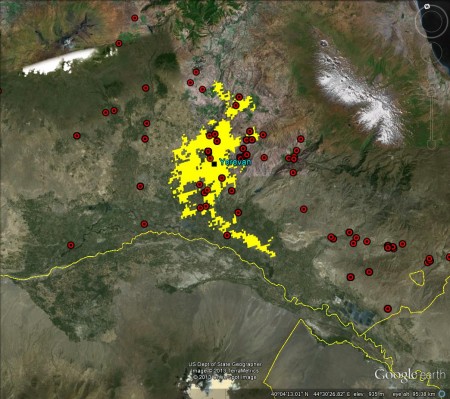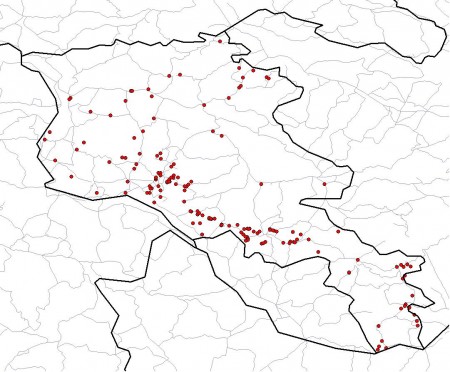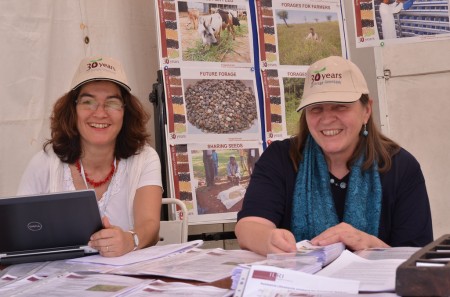Kai Sonder, CGIAR GIS geek extraordinaire, alerts us to the release of a couple of cool new global geospatial datasets, on roads and urban expansion. You need GIS software to get the full benefit of these, but at least for the city one some of the data 1 are available in KML format. This is what you get when you map in Google Earth Yerevan’s present extent together with the location of wheat germplasm accessions from Genesys.
Clearly some of those samples must have been collected a while back, when the city was perhaps smaller. And this is what you get when you map Armenia’s roads, again with wheat, but this time in DIVA-GIS.
A nice enough illustration of a bias towards collecting germplasm near roads that has been looked at in quite a lot of detail in another part of the world. But I just can’t help thinking these resources should be easier to play around with. Especially together.
LATER: Spurred on by Cedric and Jeremy, let me spell it out in more detail. What I would have liked is for both datasets to be available in their entirety in a format allowing easy upload to Google Earth. You will tell me that if you’re really, seriously interested in analyzing these datasets, together with others (like that Armenian wheat stuff from Genesys, say), you can do it by downloading the shapefiles, which is the standard format for such things, and opening them in any decent GIS software. And you’d be right. But isn’t there another kind of user? The one who wants to just, well, play around. Maybe even as a preliminary to more serious analysis, but initially just play around. That user is not well served by these resources. I know because I am that user, and I don’t feel well served.


